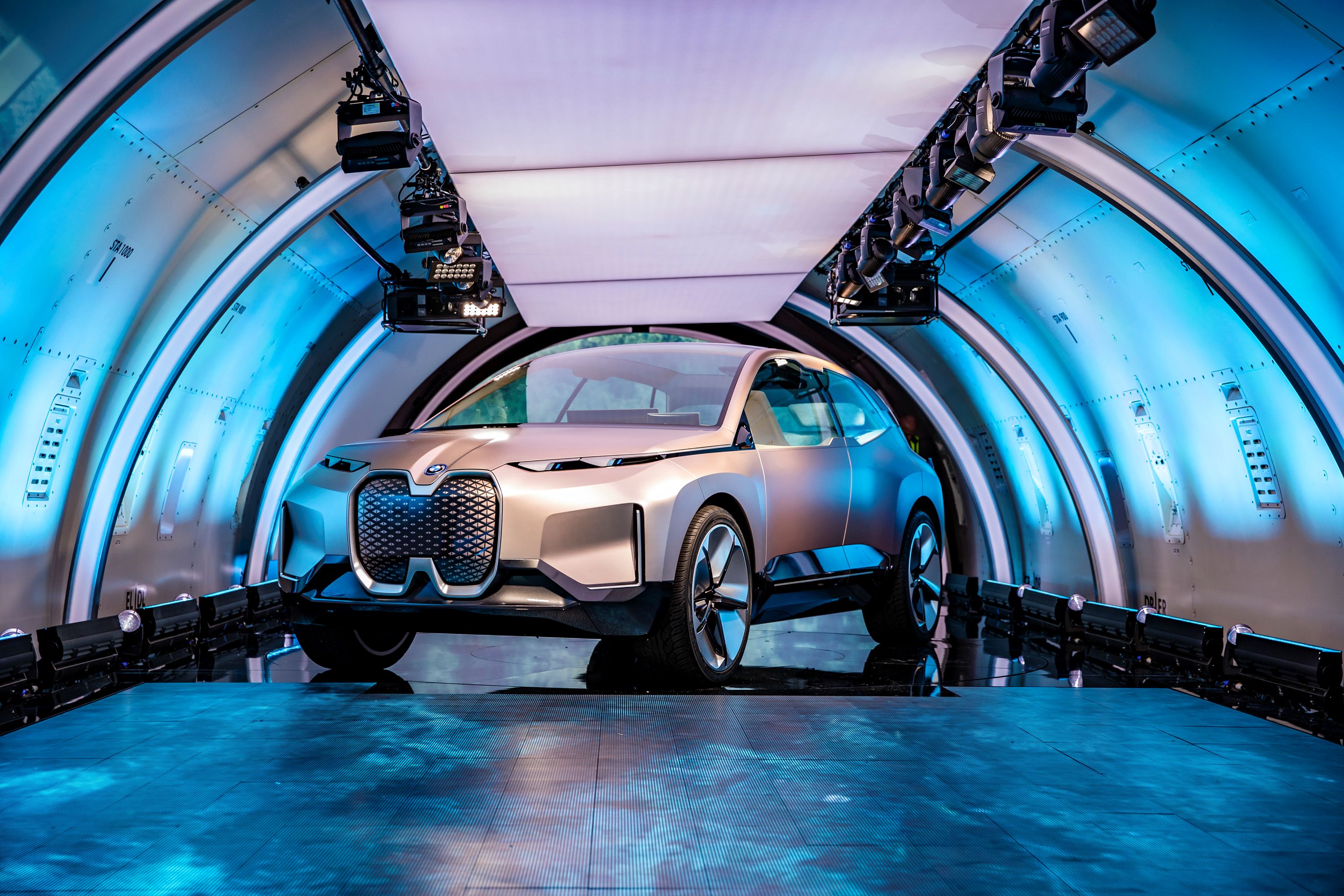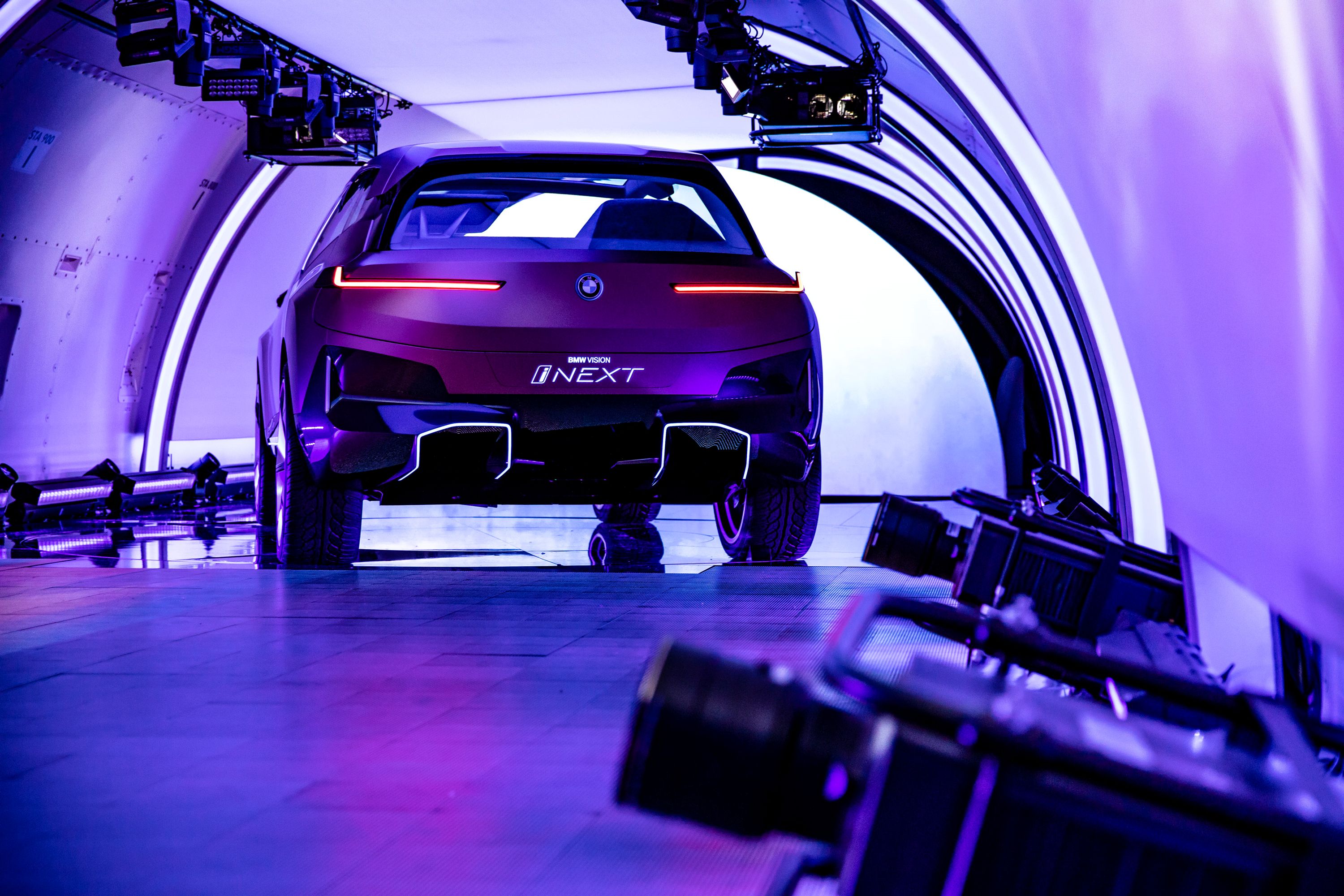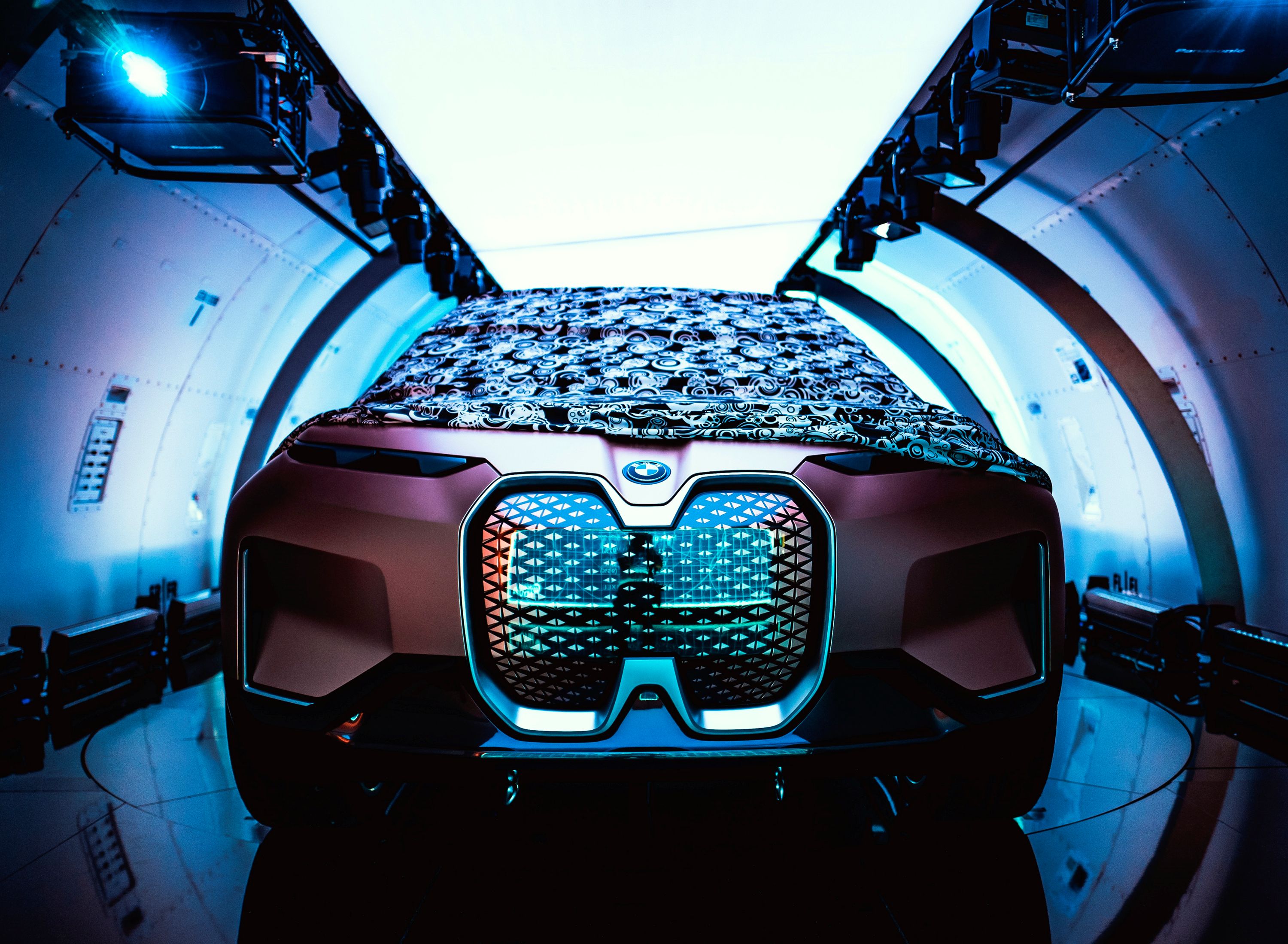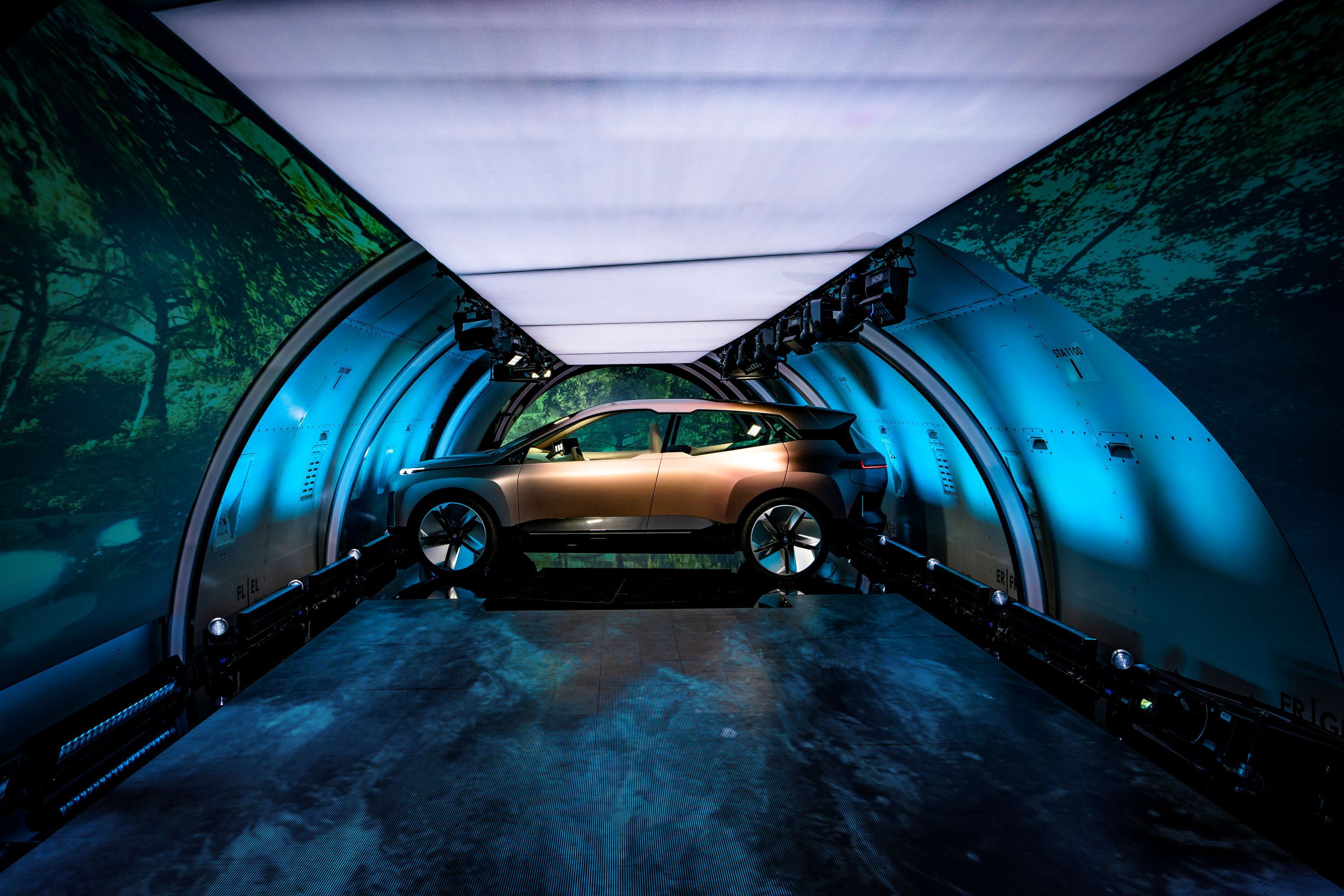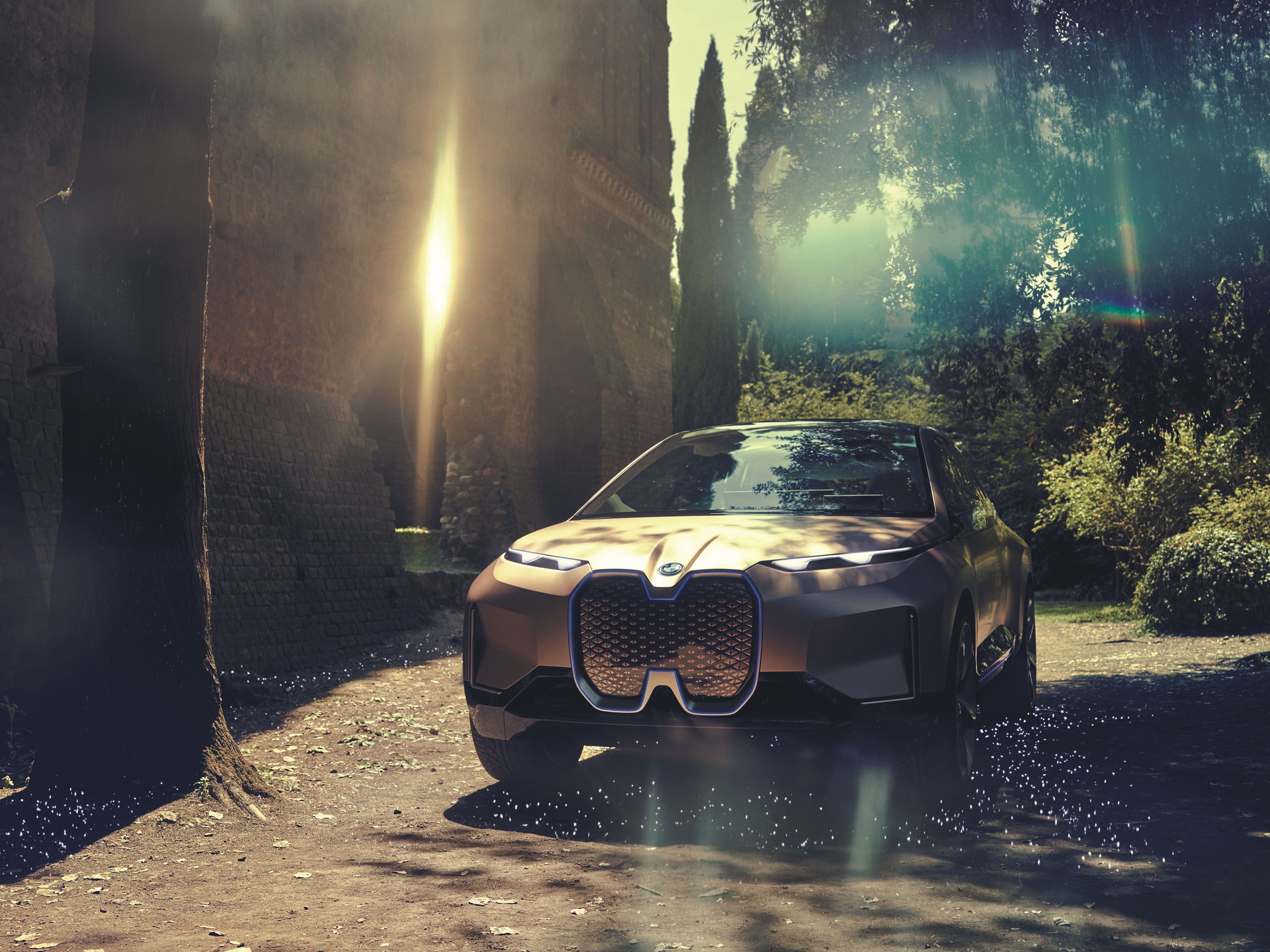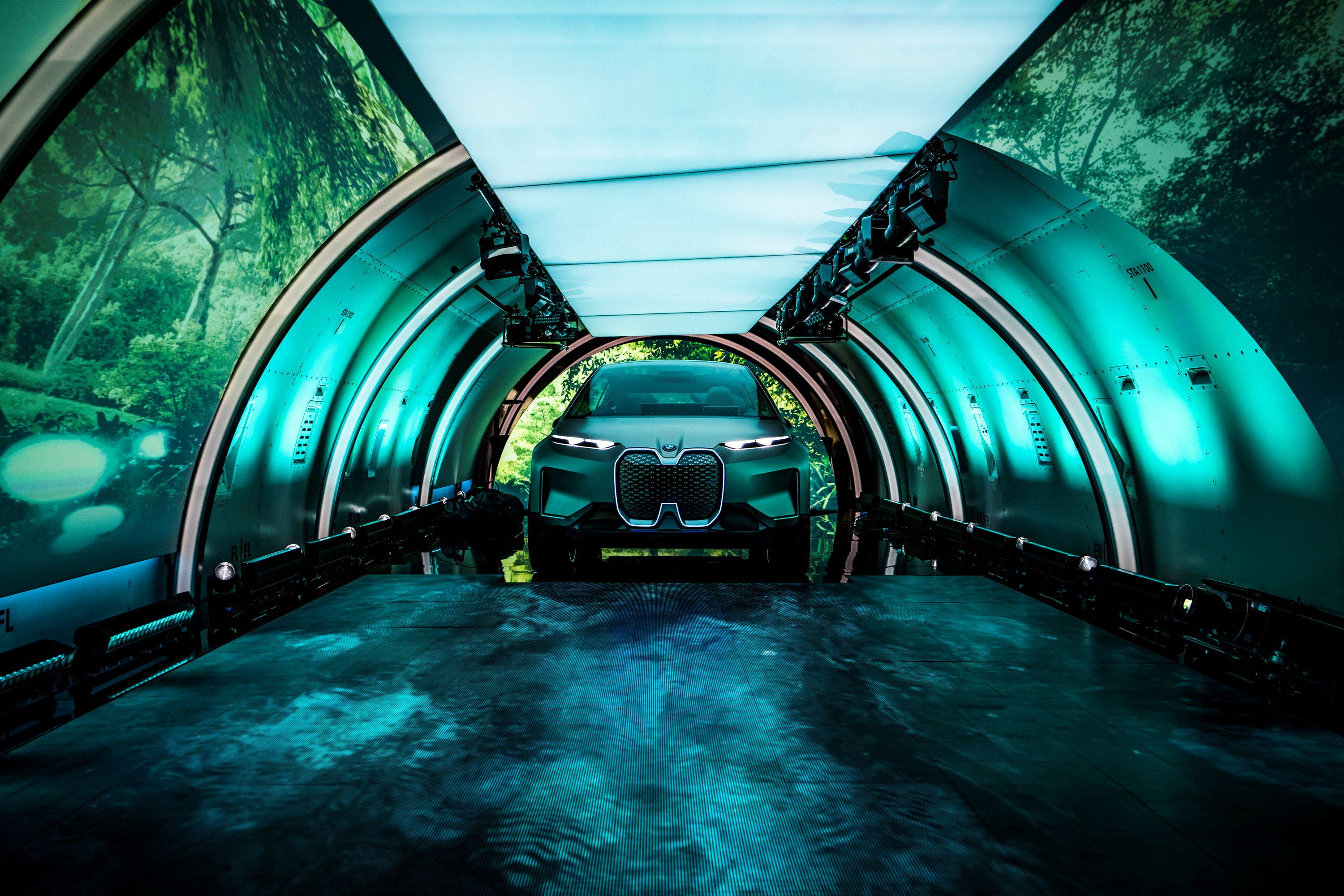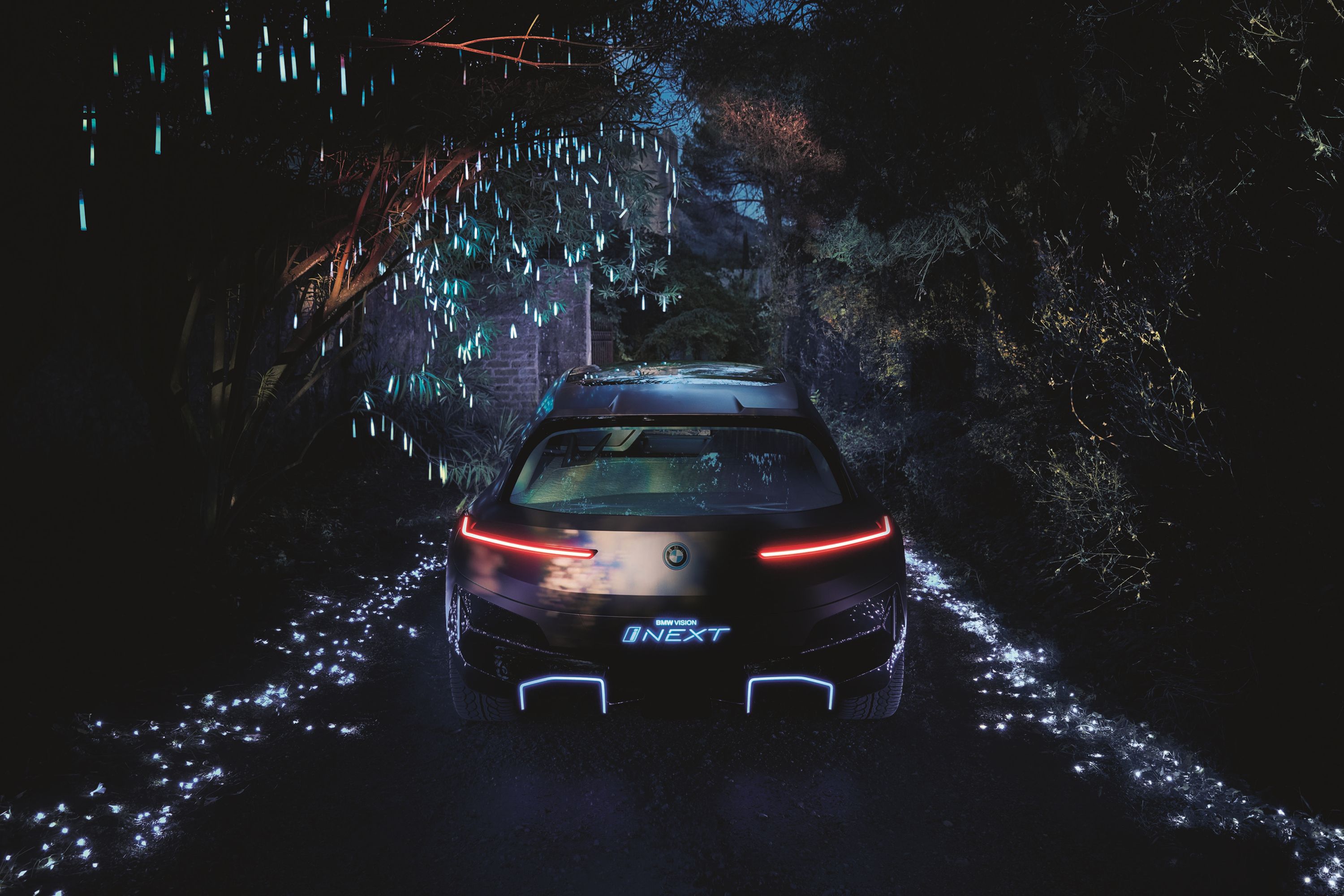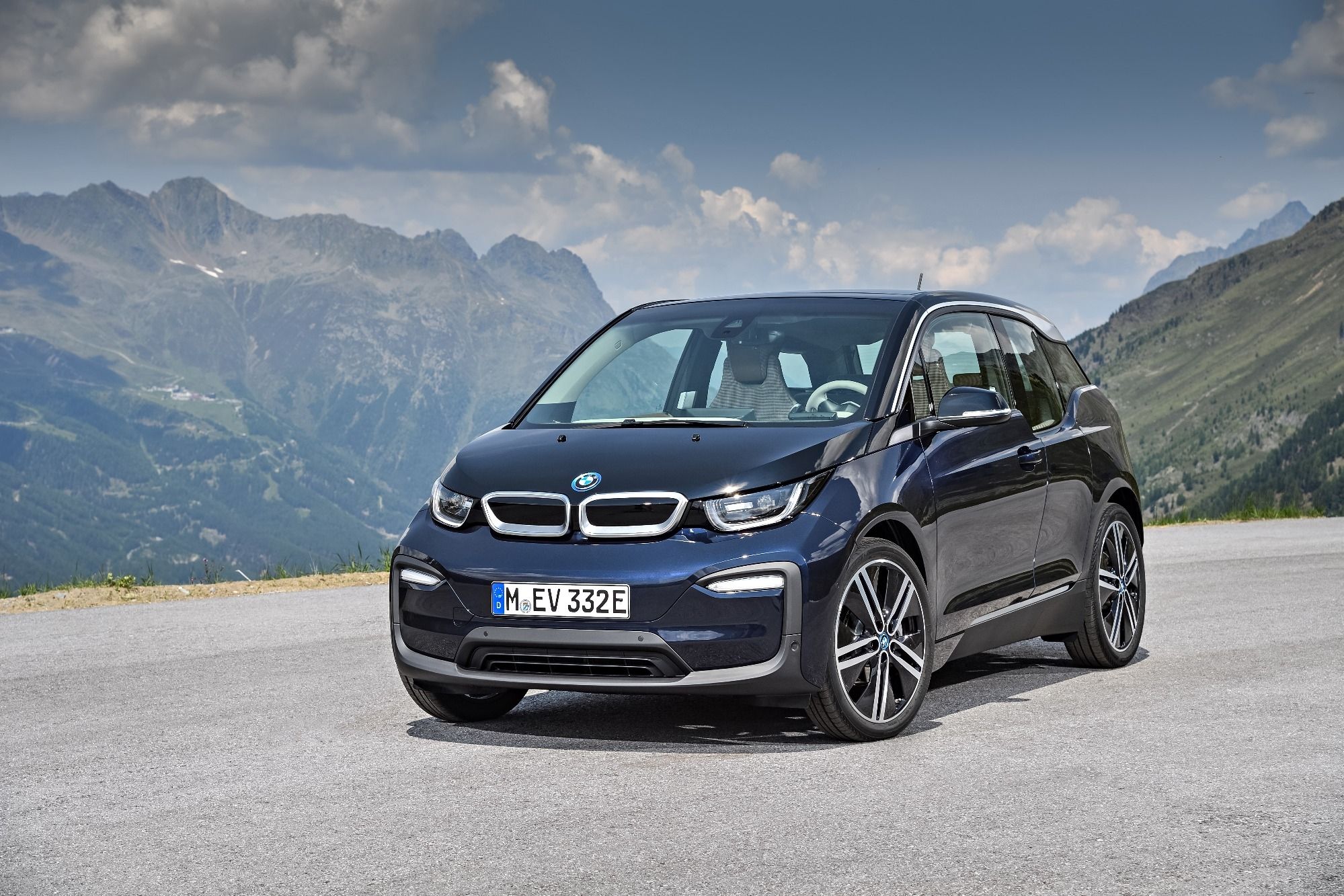
I was pointing the long blue nose of a Mustang south on the 101 heading towards San Francisco International Airport, quad pipes belting out a track that could go into the Automotive Industry's Greatest Hits album while man and V8 muscle raced through Tesla's backyard, when a thought surfaced. "BMW sure has a funny way of revealing the car of the future," I thought to myself.
Little would doubt it upon learning that in order to underscore the gravity of the Vision iNEXT concept, BMW borrowed a Boeing 777 from Lufthansa and turned its interior into an exhibition room where it would bring an auto show-grade reveal to four cities, Munich, New York, San Francisco, and Beijing.
If walking past one of the plane's gargantuan twin engines before boarding wasn't enough theater, a litter of lights and motorized movable platforms lay within the Boeing's belly, ready to spin and light up the concept car inside. As the German automaker's latest crack at shaping the electric and autonomous future, the iNEXT Concept launches the car world further into a mildly dystopic future than just about anything else on the road or in the industry's pipeline, spliff-smoking Elon Musk included.
Its looks, an attempt to answer the question, "What does a vehicle look like which no longer needs to be driven by a person but can be if desired?" can be described using the word "polarizing." To call BMW's answer to that question futuristic would be an understatement, but to label the Vision iNEXT sexy may be a stretch.
The first thing the eyes notice are the thin strip headlights, which melt into a black body line that circles around the hood and eventually widens to encompass the greenhouse. And then there's that odd interpretation of the classic BMW kidney grille that resembles the letter "H," made by joining the midsections of both fake kidney grilles.
As a fully electric vehicle capable of Level 5 autonomy (though early production versions will likely not be allowed to use it), the Vision iNEXT has no need to divert air under its hood to cool an internal combustion engine, but it does need a convenient place to stash some of the 33 sensors that feed the autonomous system's computer without making the Bimmer look too foreign to buyers. The Vision iNEXT is an intermediary car after all, a product intended to bridge the gap between today and tomorrow, and the grille helps serve that purpose.
Renamed the "intelligence panel," it hides the unsexy hardware required for autonomous driving underneath its 3D-printed surface. The blunt tip of intelligence panel is needed to prepare the viewer for the bulbous silhouette that is the body. Despite looking like a capsule from some angles, BMW tried to liven up the iNEXT's CUV dimensions by using a defragmented aesthetic for aerodynamic elements, by employing a more jagged cutout for the side window profile, and by underscoring the large wheelbase afforded by the lack of a combustion engine with 24-inch wheels, flared wheel arches, and a blue accent line that connects front and rear wheel wells.
Cameras replace side mirrors and unintentionally add to the capsule aesthetic, door handles are replaced by sensitive portions of door panel that respond to touch by illuminating, and warmer tones of paint transition to darker shades as the eyes move rear.
Due to the lack of safety regulations governing autonomous vehicles, the exterior is more likely to make it to the production version of the Vision iNEXT-set to debut along with BMW's suite of fully autonomous technology in 2021-than the interior is.
Like the exterior, the color-segregated cabin features a lot of visual treats while somehow appearing to uphold simplicity. To reduce the sense of clutter, BMW placed only two screens inside the crossover, a smaller unit in the driver's field of vision to display pertinent driving information and a larger screen to the right of that to allow visual interaction with the AI-powered infotainment system.
As a vehicle that lays the foundation for BMW's future, the Vision iNEXT advertises that designers think people will tire of so much technological interaction in the future. The cabin, styled after boutique hotel lounges and aimed at being a hypothetical owner's "favorite space," has been stripped of almost all buttons and features no screens for rear seat occupants
Without buttons, controlling vehicle functions requires occupants to use touch-sensitive wood and cloth surfaces that blink to life and display artificial buttons when in contact with skin, or to bark orders at the AI assistant following the "Hey BMW" activation command.
Rear-seat occupants who braved the i3-like suicide doors and stepped into the lounge seats have access to a revolutionary entertainment system that uses projectors to beam video, text, and interactive controls onto the white pages of a book included in the rear seat.
BMW designers envision using a system similar to this as an augmented form of gesture control, allowing occupants to control HVAC or audio settings by beaming the buttons onto the palm of a passenger's hand. Marking the point of transition between autonomy and driver-centered design are wooden pedals and a sleek steering wheel. Both of these retract into the firewall and dash when a driver switches from the human-piloted "Boost" mode and into the autonomous "Ease" mode, allowing them to turn and talk to other passengers or pull out a laptop and join a conference call.
If all those bells and whistles sound like they use a lot of power, rest assured, range is still a priority for BMW. While the engineering team still has work to do to get the Vision iNEXT's modular platform out in a variety of iterations, BMW is aiming for a range of 600 kilometers (375 miles) per charge in the resulting vehicles. When that goal is reached, the landscape of the automotive industry will begin its most radical change to date. We know this because the Vision iNEXT is much more than just a concept car, it's the blueprint from which all future BMW's will spawn.
It's a glimpse into the future of the company and our city's streets. It's a bridge to that future from our current position in the present. It's the stepping stone that provides a traversable surface between an analogue today and a digitized, driverless tomorrow. It's a promise from BMW that we can expect to see that Blue and White Roundel, the same one that still prides itself on the raw appeal of "sheer driving pleasure," well into the future.
The future is coming, and yes, it's electric and driverless. The future is coming, and no, Tesla won't be its only architect. The future is coming, and wouldn't you want the people who spend their weekends shredding tires in M4s designing it?

